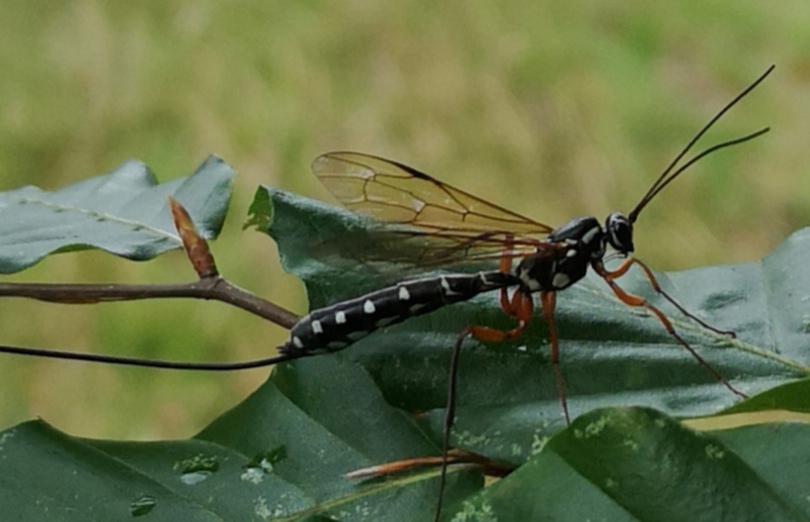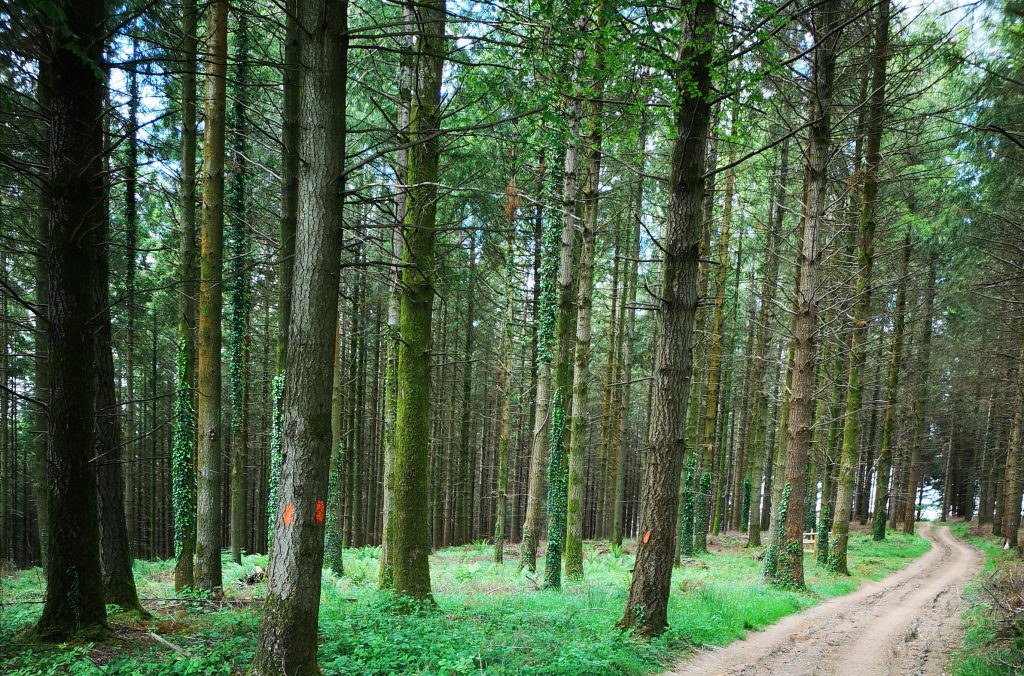The Sabre Wasp
Our species and plans (3)
Sabre Wasp Rhyssa persuasoria
Status : widespread but localised
Habitat: mixed and coniferous woodland.
Identification: peak times for observing are July and August. Often called the giant Ichneumon, it is the largest Ichneumon in Britain and one of the largest in Europe with a body size of 10mm to 40mm excluding the ovipositor ( the females egg laying tube) which can be longer than the body. A long black thorax with uniformed white markings along its length. Orange/red legs make this fascinating Ichneumon easy to identify.

Behaviour : The life cycle of this insect is both incredible and gruesome. They will lay their eggs either in or close to its intended host which tends to be the larvae of Horntails or Longhorn Beetles. They do this by drilling a number of holes into fallen branches and trees where they hope to locate the host larvae which is usually the Horntail Wasp or Longhorn Beetles. The female Sabre Wasp uses her sense of smell to detect their presence and once located her ovipositor stings and paralyses the host on which she lays her egg. When the grub hatches it consumes the outer tissues of the larvae first leaving its organs until last thus ensuring a fresh feast.
Once emerged as an adult wasp it will more than likely feed on nectar.

Habitat plans: Our plans will be to ensure we maintain plenty of open glades and rides which can provide a good degree of fallen timber as well as dead wood, which is so important for the many ecosystems within a woodland. For maximum biodiversity you do need a large percentage of dead and decaying wood. This really is a fascinating species, albeit a very gruesome!



